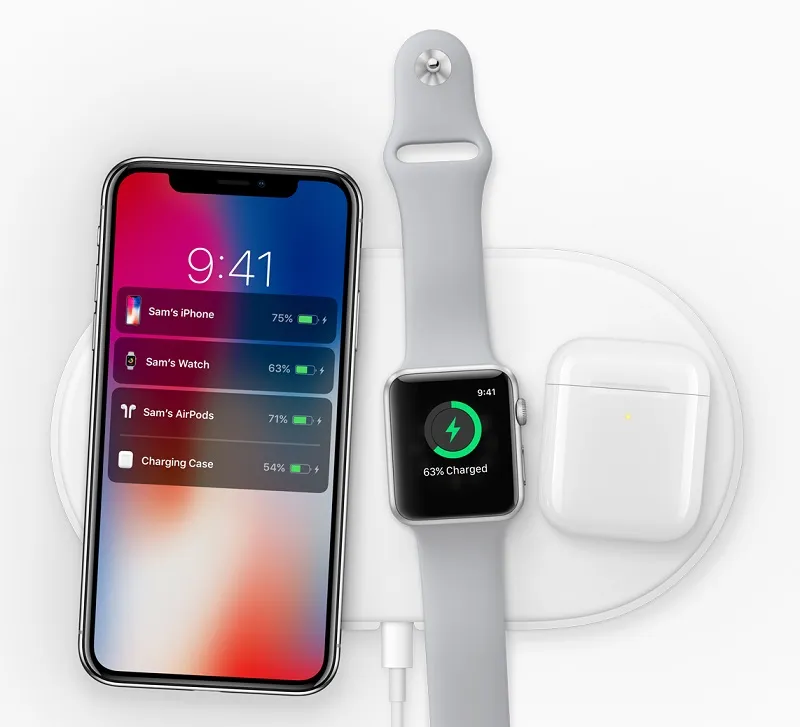Everything you need to know about the iPhone X - from Face ID and AR to Animoji and price
Apple on Wednesday unveiled a new phone, iPhone X, at the Steve Jobs Theater in Apple Park. The company showcased the iPhone X as "the future of the smartphone". The latest iPhone variant includes an all-glass design with a 5.8-inch Super Retina display, A11 Bionic chip, wireless charging and an improved rear camera with dual optical image stabilisation.
iPhone X also includes a new way for customers to unlock, authenticate and pay using Face ID, enabled by the new TrueDepth camera.
Jony Ive, Apple’s Chief Design Officer, said in a statement,
For more than a decade, our intention has been to create an iPhone that is all display. The iPhone X is the realisation of that vision...With the introduction of iPhone ten years ago, we revolutionised the mobile phone with Multi-Touch. iPhone X marks a new era for iPhone — one in which the device disappears into the experience.
Philip Schiller, Apple’s Senior Vice President of Worldwide Marketing, noted that the iPhone X enables new user experiences — from unlocking your iPhone with Face ID to playing immersive AR games and sharing Animoji in Messages — and touted the launch of iPhone X to be the beginning of the next ten years for iPhone.

iPhone X, Image credits- Apple
Design
iPhone X includes an all-screen display that follows the curve of the device, to rounded corners. Apple claims that the all-glass front and back feature the "most durable glass ever" in a smartphone in silver or space gray, while a polished, surgical-grade stainless steel band wraps around and reinforces iPhone X.
The device also includes a seven-layer colour process that allows for precise colour hues and opacity on the glass finish. A reflective optical layer enhances the rich colours, making the design as elegant as it is durable, while maintaining water and dust resistance.
Super Retina Display
Apple notes that the 5.8-inch Super Retina display is the first OLED panel that "rises to the standards of iPhone", with stunning colours, true blacks, a million-to-one contrast ratio and wide colour support with the best system-wide colour management in a smartphone. The HDR display supports Dolby Vision and HDR10, and includes True Tone which dynamically adjusts the white balance of the display to match the surrounding light for a more natural, paper-like viewing experience.
iOS 11 is redesigned to take full advantage of the Super Retina display and replaces the Home button with fast and fluid gestures, allowing customers to naturally and intuitively navigate iPhone X. Users can simply swipe up from the bottom to go home from anywhere.
Face ID, a new Authentication System
With Face ID, Apple claims to have revolutionised authentication on iPhone X, by using a state-of-the-art TrueDepth camera system made up of a dot projector, infrared camera and flood illuminator. All this is powered by A11 Bionic, which accurately maps and recognises a face. These depth-sensing technologies work together to securely unlock iPhone, enable Apple Pay, gain access to secure apps and offer many more new features.
Apple's Face ID projects more than 30,000 invisible IR dots. The IR image and dot pattern are pushed through neural networks to create a mathematical model of your face and send the data to the secure enclave to confirm a match, while adapting to physical changes in appearance over time.

Face recognition feature demo
All saved facial information is protected by the secure enclave to keep data secure, while all the processing is done on-device and not in the cloud to protect user privacy. Face ID only unlocks iPhone X when customers look at it and is designed to prevent spoofing by photos or masks.
Front and Back Cameras featuring Portrait Lighting
The new 7-megapixel TrueDepth camera that enables Face ID features wide colour capture, auto image stabilisation, precise exposure control, and brings Portrait mode to the front camera for selfies with a depth-of-field effect.
iPhone X also features a redesigned dual 12-megapixel rear camera system with dual optical image stabilisation. The ƒ/1.8 aperture on the wide-angle camera joins an improved ƒ/2.4 aperture on the telephoto camera for better photos and videos.
A new colour filter, deeper pixels and an improved Apple-designed image signal processor deliver advanced pixel processing, wide colour capture, faster autofocus in low light and better HDR photos. A new quad LED True Tone Flash offers twice the uniformity of light and includes Slow Sync, resulting in more uniformly lit backgrounds and foregrounds.
Augmented Reality experiences
The cameras on iPhone X are custom-tuned for AR experiences. Each camera is individually calibrated with new gyroscopes and accelerometers for accurate motion tracking. The A11 Bionic CPU handles world tracking, scene recognition, the GPU enables graphics at 60fps, and the image signal processor does real-time lighting estimation.
With ARKit, iOS developers can take advantage of the TrueDepth camera and rear cameras to create games and apps offering immersive and fluid experiences that go far beyond the screen.
The new camera also delivers better video stabilisation, 4K video up to 60fps and 1080p slo-mo up to 240fps. The Apple-designed video encoder provides real-time image and motion analysis for optimal quality video.
The Portrait mode with Portrait Lighting on the front and rear cameras brings dramatic studio lighting effects to iPhone and allows customers to capture portraits with a shallow depth-of-field effect in five different lighting styles.
Animoji - a more dynamic form of animal Emoji?
The TrueDepth camera brings emoji to life in a way that Apple terms terms "Animoji". Working with A11 Bionic, the TrueDepth camera captures and analyses over 50 different facial muscle movements, then animates those expressions in a dozen different Animoji, including a panda, unicorn and robot.
Available as an iMessage app pre-installed on iPhone X, customers can record and send Animoji messages (with their voice) that can smile, frown and more.
Introducing the A11 Bionic chip
Apple announced that the A11 Bionic chip features a six-core CPU design with two performance cores that are 25 percent faster and four efficiency cores that are 70 percent faster than the previous A10 Fusion chip.
A new, second-generation performance controller can harness all six cores simultaneously, delivering up to 70 percent greater performance for multi-threaded workloads, giving customers more power while lasting two hours longer than the iPhone 7.
A11 Bionic also integrates an Apple-designed GPU with a three-core design that delivers up to 30 percent faster graphics performance than the previous generation. All this power enables new machine learning, AR apps and immersive 3D games.
Apple also noted that the new A11 Bionic neural engine has a dual-core design and performs up to 600 billion operations per second for real-time processing. The A11 Bionic neural engine is designed for specific machine learning algorithms and enables Face ID, Animoji and other features.
Wireless charging
The glass back design enables a wireless charging solution, which works with the established Qi ecosystem, including two new wireless charging mats from Belkin and mophie, available from apple.com and Apple Stores.

AirPower in action, Image credits- Apple Press kit
Apple gave a sneak peek of AirPower, an Apple-designed wireless charging accessory coming in 2018, which offers an active charging area that will allow iPhone 8, iPhone 8 Plus or iPhone X customers to simultaneously charge up to three devices, including Apple Watch Series 3 and a new optional wireless charging case for AirPods.
Pricing and availability
Apple announced that iPhone X will be available in two variants- silver and space gray in 64GB and 256GB models - and will be available on their website, at Apple Stores and through Apple Authorised Resellers and carriers.
Priced at $999, the iPhone X will be available for pre-order beginning Friday, October 27, in more than 55 countries (including India), and in stores beginning Friday, November 3.
Website- Apple







![[Tech30] This startup is using AI to accelerate drug discovery](https://images.yourstory.com/cs/2/4c455a90a21411e98b07315772315642/Imageoy3g1573409993725jpg?mode=crop&crop=faces&ar=1%3A1&format=auto&w=1920&q=75)